There are certain words like art that we struggle to define. What is art? A quick google search and nose dive into the Oxford dictionary link, provides us with the following: “The expression or application of human creative skill and imagination, typically in a visual form such as painting or sculpture, producing works to be appreciated primarily for their beauty or emotional power.”
The first part of the definition can be applied to anything. We then encounter the word “typically” but what is typical about the production of art or about art? Let alone life…
So art can sit in anything and be with anything. And through the intertwining of disciplines render exploration, examination and solution finding a rounder element suited to our complexities of life and human characteristics.
Last month I set off to go see the exhibition 'King's Artists – New Thinking, New Making' at The Arcade Bush House at King’s College London, where artists and academics came together to interrogate the future through artistic and scientific collaborations.
Amongst the many collaborations, some of them on display were the following:
The Brooke Roberts Innovation Agency (BRIA) worked with Dr Matthew Howard, Department of Informatics and his research on digital knitwear design on the development of experimental ‘wearable’ smart textiles. The work entitled 'Experimental Smart Textiles' fuses digital knitwear design, sensor embedded yarns and medical scans. Using industrial knitting machines the wearables pick up and capture human behavioural data through the sensor, providing information about any medical needs, it could potentially look out for blood pressure and be used for more understanding of combining fashion and health.
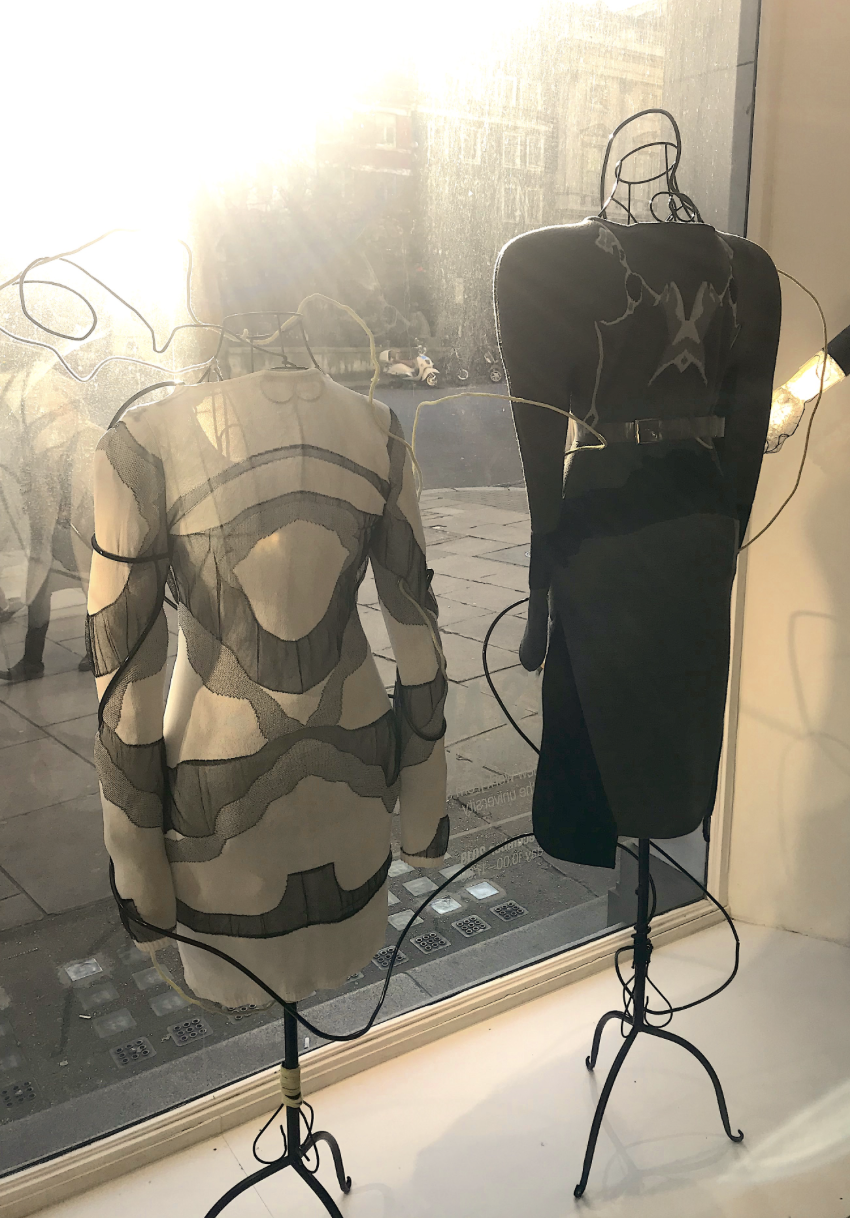
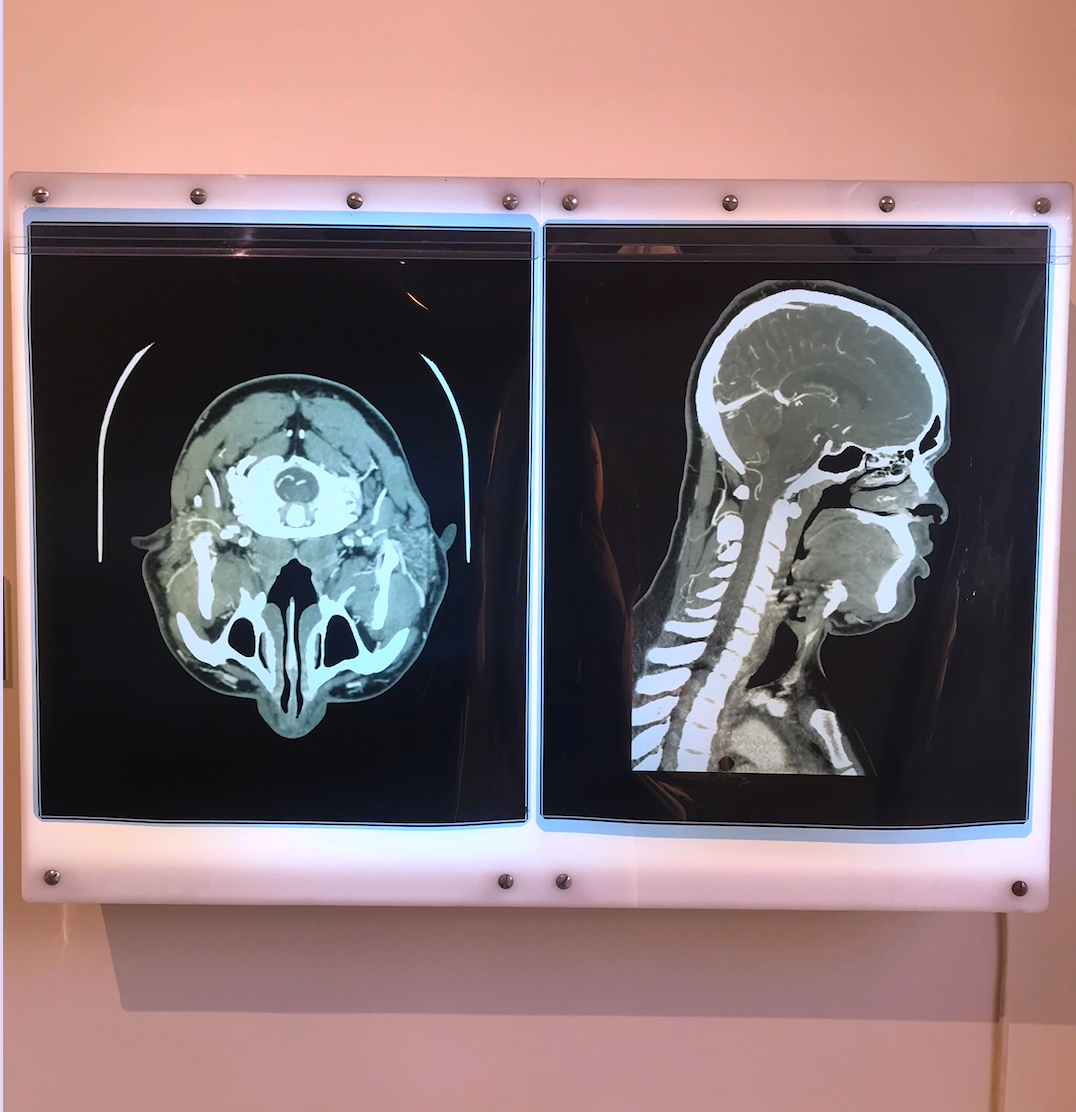
Creative writer, Rebecca Lynch worked with Professor Elizabeth Sklar, Head of the Centre for Robotics Research at King’s. She developed short fictional films imagining technological futures for human-robot societies. The artwork inspired by the robotics research, explores the design, development and testing of future robotic technologies. 'Morphologix' is a series of experimental visual storytelling for a human-robot society.

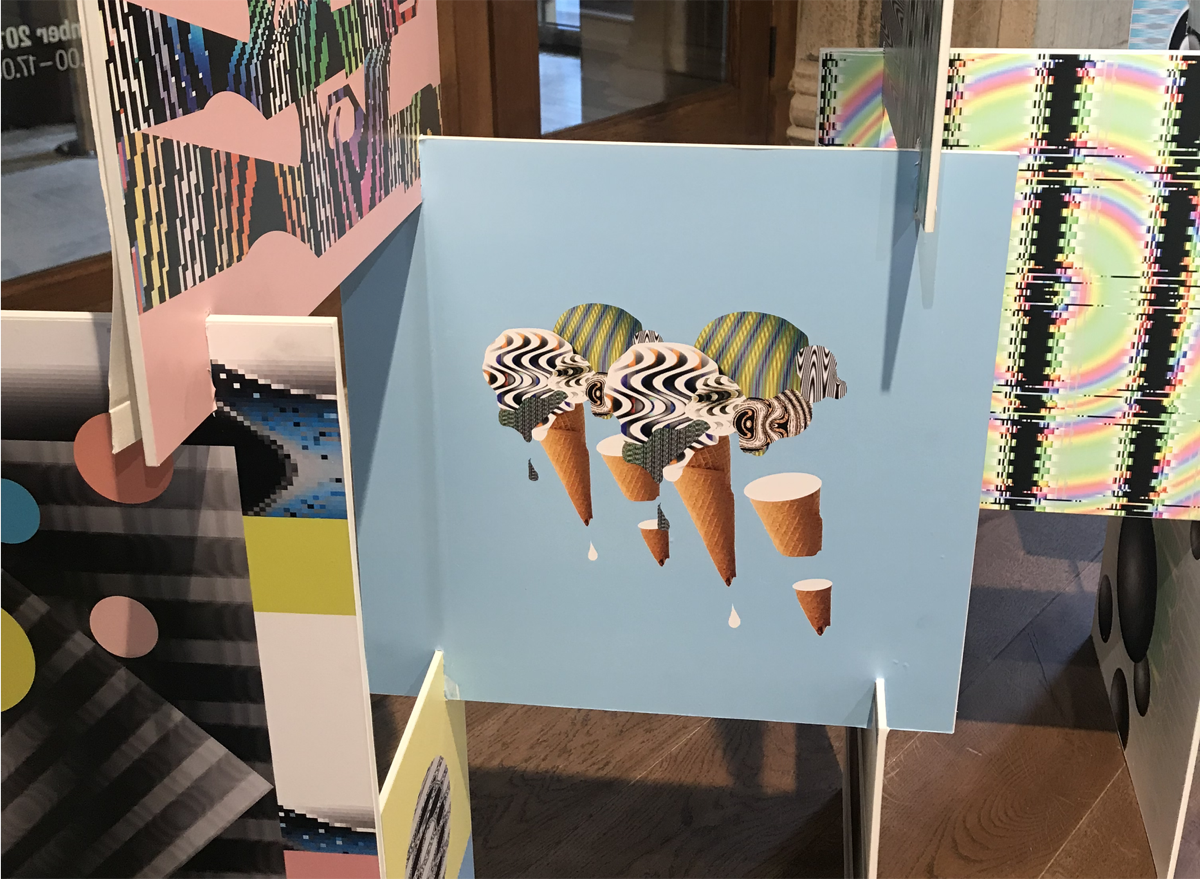
Dr Kai Syng Tan, an artist, curator and researcher worked with Professor Philip Asherson in the Department of Social, Genetic & Developmental Psychiatry to create a tapestry entitled 'We sat on a mat and had a chat and made maps! #MagicCarpet'. It brings together research, narratives and questions about mind-wandering. Mind-wandering alludes to when we follow our self-generated thoughts that are unrelated to the external environment. This is a universal human experience, however, if it is done in excess and too spontaneously, it becomes a key feature of Attention Deficit Hyperactivity Disorder (ADHD).
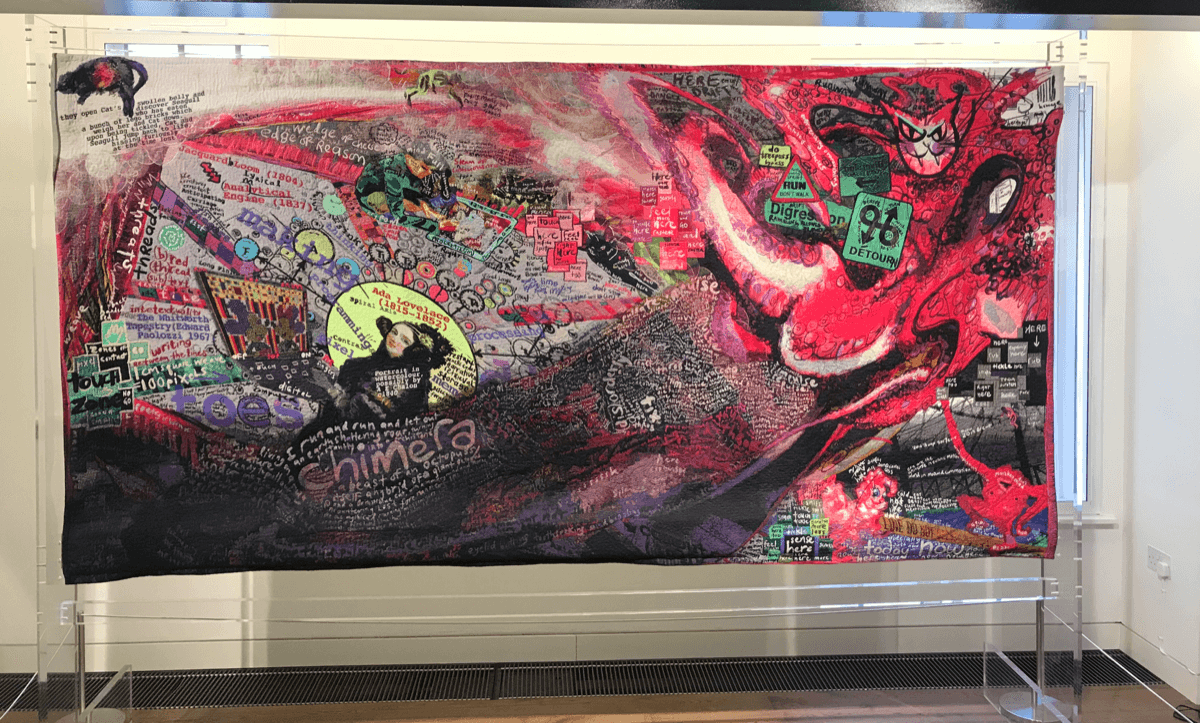
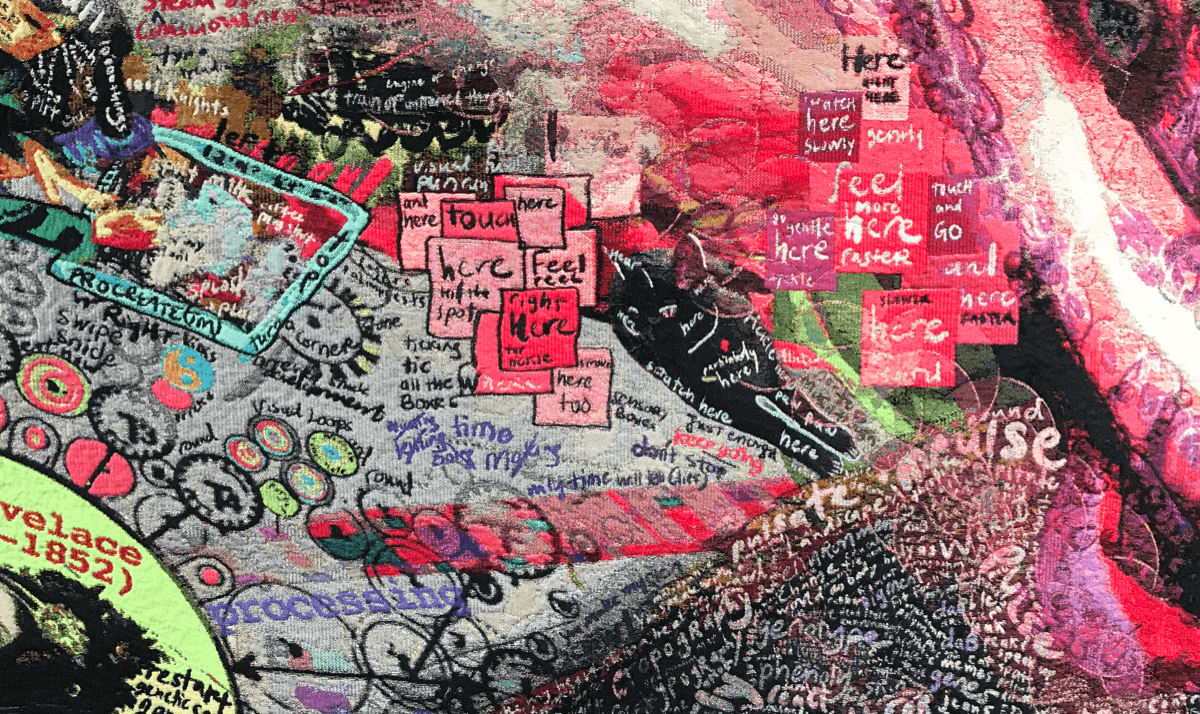
Design engineer Nassia Inglessis worked in collaboration with Dr Richard Overill, Senior Lecturer in Computer Science to look at what occurs when artificial intelligence behaves unpredictably. 'Disobedient AI', the interactive sculpture, explores inversions of the future where human and artificial entities coexist. The notion of disobedience was chosen due to the current political climate the world is in and that the term lends itself to both destruction and progress, a term also becoming a prevalent ideology in our lives.

In 2029 King’s College London will celebrate their 200th anniversary. This is closer than we may first think; and as we make our way towards that date, as we listen to NASA reaching further paths of the universe, the possibility of landing on Mars, art tools becoming 3D, looking towards combining research between academics, scientists and artists becomes more and more important.
I set off to find out more about King's College London and to showcase how art plays an important role in education. In the different faculties across King's College London, cultural programmes and activities nurture an arena for academia, sciences and the arts sector to come together. Thematic hubs such as Science Gallery London, The Arts, Health & Wellbeing programme, and The Creative Digital Partnerships (virtual) hub have united many disciplines with the aim to enhance research and inovation. Amongst these many activities and collaborations, such as The Arts in Mind Festival which explores ways to understand mental health, the brain, the mind and improve wellbeing, interesting exhibitions are coming about, like 'The Creative Impacts' on "How can I make my research have an impact beyond academia?" and 'Art | Philosophy: Migration, Meaning, Time'.
Art has often been shunned in educative hierarchies, but art is one of the rare subjects that combines making us think with making us dream, bring about new ideas or new possibilities whilst exploring traditional methods, making us see or notice things that we may have not throughout our day and open up different avenues, branching out into a variety of subjects.
There’s much talk about disruption, innovation, globalisation 4.0 as well as the backlash to globalisation. Through all this a tool that could lead us into the future while taming our worries is art. The power of art is such that it can blend itself into other subjects. And so not only is it vital that art is studied and encouraged, that Art History remains an A Level, but also that art gains the respect it deserves in the hierarchy of subjects, no one, no country can exist in segregation, so why should disciplines?
https://www.kcl.ac.uk/cultural/index.aspx
